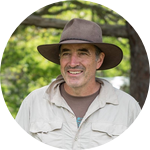
Karl Vernes
Armidale, New South Wales
University of New England
Associate Professor, Mammal Ecology and Conservation
More
I am a mammal ecologist with a passion for contributing to the conservation and management of mammals, especially Australia’s threatened kangaroos, wallabies, and rat-kangaroos.
I have always been interested in Australian mammals; as a teenager at high school I avidly read any book on mammals I could get my hands on, collected skulls and bones, and 'went bush' to watch animals in the wild. I studied Zoology at James Cook University, continuing my studies there with a Masters and then a PhD; both degrees focused on kangaroos, wallabies, and rat-kangaroos, and how ecological knowledge of a species can help guide conservation and management.
I have published over 80 peer-reviewed research papers and book chapters on mammals. My work has always been field-based, in recent years, heavily focused on the use of passive infra-red cameras (‘camera-traps’) to understand mammal ecology. In the pursuit of understanding mammal ecology, I have deployed camera traps for mammals in a wide range of habitats and locations – from the temperate forests of Tasmania to the tropical woodlands of the Kimberley, and on three continents. In addition to work in Australia where I have primarily focused on kangaroos and other marsupials, my research questions have led me to Canada – where I worked on flying squirrels and their specialised diet of truffles, Bhutan – where I currently work on protecting biological corridors for iconic cats like tiger and leopard, and Mexico – where I have a camera-based research project underway that is examining the use of semi-flooded caverns (‘cenotes’) by mammals that include jaguar and puma.
I have spent a decade gathering data on the sighting locations reported for the desert rat-kangaroo, and feel this project can make a tangible contribution to the knowledge of the species distribution and habitat. You can see my research profile and interests on Instagram, Twitter, or Google Scholar.
June 2018